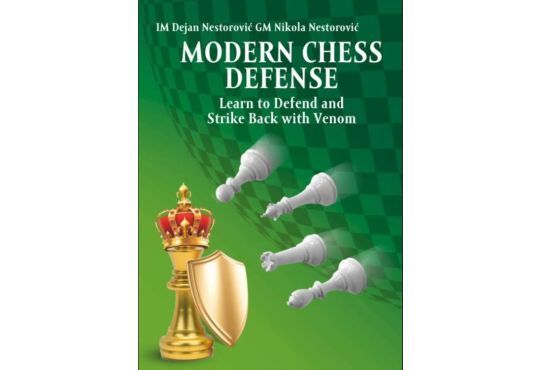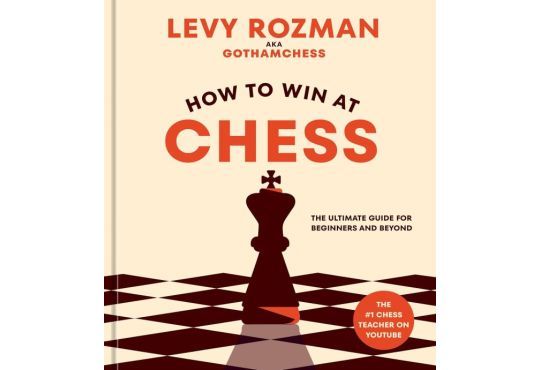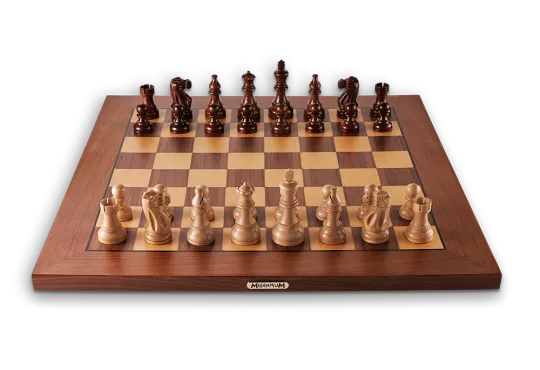The 10 Best Intermediate Chess Books
As an intermediate chess player, your main goal as a chess player is likely to take your game to the next level. There’s also a good chance you have yet to turn to books as a way of studying chess.
These days online articles and YouTube videos are more popular methods for studying chess. Nevertheless, books written by chess coaches, experts, and players offer a level of depth and insight not available in other mediums. Beyond spending a few minutes reading an article about a new opening, chess books allow you understand the different stages, skills, and concepts of the game at a new level.
That said, it can be hard to pick from the massive selection of chess books available. Here are ten books I've selected that are great for intermediate players.

Table of contents
- Classic and Autobiographical Chess Books
- Instructional Chess Books
- 5. How to Reassess Your Chess by Jeremy Silman (2010)
- 6. 100 Endgames You Must Know - Jesús de la Villa (2008)
- 7. Small Steps to Giant Improvement: Master Pawn Play in Chess - Sam Shankland (2018)
- 8. Fundamental Chess Openings by Paul van der Sterren (2009)
- 9. Winning Chess Strategies by Yasser Seirawan (1992)
- 10. Excelling at Chess Calculation by Jacob Aagaard (2004)
- Conclusion: Why Study With Chess Books?
- Frequently Asked Questions
Classic and Autobiographical Chess Books
One of the joys of reading chess books is that they provide a window into the minds of some of the best chess players to ever live. These classic chess books offer a blend of historical and autobiographical interest as well as fascinating insights into the game itself.
1. My 60 Memorable Games by Bobby Fischer (1969)
This is one of the most well-known chess books for a reason. My 60 Memorable Games, by world champion Bobby Fischer, provides us with a detailed account of his most famous and instructive games.
For an intermediate player, this is a fascinating read. You need to have a good handle on the basics of chess to understand it, and even so, following the logic of some games may be challenging. Nevertheless, it provides fascinating lessons about the game of chess and insights into one of the greatest players of all time.
2. My System by Aron Nimzowitsch (1929)
My System provides essential explanations of key concepts that every intermediate player needs to develop. The book offers familiar ideas like take control of the center, play on the open files, and the strength of passed pawns. However, they are presented uniquely based on what Ninzomitsch calls his System. This leads to new insights; for example, showing how an isolated pawn can be an advantage. Many of the key ideas of hypermodernism were also first outlined in this work, making it a key part of chess history.
-
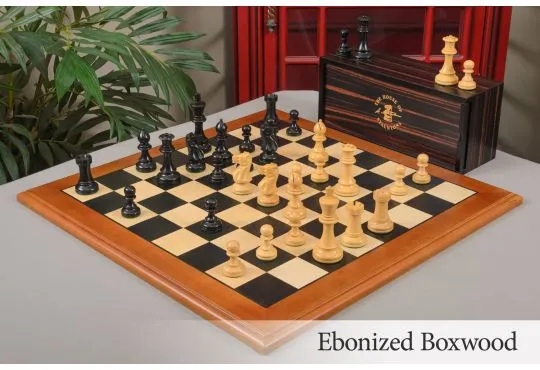 Free Worldwide Shipping
The Superior Grandmaster Chess Set, Box, & Board Combination Enjoy Savings of 24% Off MSRP When Purchased as a Combination
Free Worldwide Shipping
The Superior Grandmaster Chess Set, Box, & Board Combination Enjoy Savings of 24% Off MSRP When Purchased as a Combination$457.00
Starting at $349.00
To $428.95
After explaining the key elements of his system, Nimzowitch provides sections on Positional Play and Illustrative Games. Here, we see the emphasis on playing for a better position in the long term and examine some fascinating games. Overall, this book has its challenges but is an excellent option for an intermediate player looking to explore chess concepts at a more advanced level.
3. The Life and Games of Mikhail Tal by Mikhail Tal (1976)
World Champion, Mikhail Tal is the author and subject of this extraordinary book that tracks his life alongside a record of his games. As readers, we get to experience his development from a young chess prodigy in Riga to some of his most famous and dazzling matches.
The games themselves showcase his unique playing style with lots of sacrifices and tactical combinations. For an intermediate player, they are extremely instructive. Although the book lacks explanations of basic chess principles, Tal's games show us the logic behind moves that may at first seem mysterious or bad. For any player, it is a fascinating read, and for someone looking to expand their game, it is a useful and insightful account.

4. A Game of Queens: Judit Polgar Teaches Chess by Judit Polgar (2014)
Judit Polgar became a grandmaster at the age of 15, a world record at that time, and was the top-rated female player for over two decades. A Game of Queens: Judit Polgar Teaches Chess is the third title in a trilogy of excellent instructional books. It is also perfectly suited to intermediate, improving players.
Polgar’s career and games form the core of the book. Her fascinating games are intermixed with entertaining stories, insights into chess psychology, and a great deal of practical lessons in chess at every stage of the game. By analyzing the annotated games, we come to understand, through clear and engaging writing, how one of the world’s greatest players thinks through her games.
Instructional Chess Books
While the above books offer detailed analysis and fascinating insight into games of chess, they are not purely focused on improving as a chess player. The following are all about studying different aspects of chess and fundamentally are about understanding the game and improving as a player.
5. How to Reassess Your Chess by Jeremy Silman (2010)
How to Reassess Your Chess by Jeremy Silman is a popular work that offers a unique way to approach the game. This book is excellent for intermediate players because it makes advanced analysis seem simple. Silman uses straightforward language to explain how high-ranking players understand the different elements of a position and find the best moves.
One of the key concepts in the book is ‘imbalances'. He explains how differences in material, pawn structure, and piece activity can be analyzed to understand the strengths and weaknesses of a position. Even seemingly minor imbalances can often be the deciding factor in a chess game.
He explains how this position understanding can be used to create plans in chess games and find the correct move in a position.

6. 100 Endgames You Must Know - Jesús de la Villa (2008)
Jesús de la Villa, a Spanish Grandmaster, starts 100 Endgames You Must Know by explaining why endgame study is often neglected. I think this is especially true for intermediate players. Intermediate study is usually focused on openings and tactics. Nevertheless, many games are lost because of a lack of simple knowledge of endgame theory.
Intermediate players looking to study endgames will find this book perfect. It starts with simpler examples and gradually progresses to more complex, theoretical examples. Every ending presented in the book is likely to appear in real games. Mastering these surprisingly simple endgame concepts will increase your win (and draw) percentage.
-
 Free Worldwide Shipping
The Windsor Tournament Series Wood Chess Set, Box, & Board Combination Enjoy Savings of 24% Off MSRP When Purchased as a Combination
Free Worldwide Shipping
The Windsor Tournament Series Wood Chess Set, Box, & Board Combination Enjoy Savings of 24% Off MSRP When Purchased as a Combination$377.95
Starting at $289.00
To $378.95
7. Small Steps to Giant Improvement: Master Pawn Play in Chess - Sam Shankland (2018)
Another often overlooked area of chess study is pawn play. One mistake beginners and intermediate players often make is overlooking the importance of pawns.
Olympiad Gold Medalist Sam Shankland makes an excellent case for the importance of pawns in Small Steps to Giant Improvement. He encourages players to look for small advantages and make improvements by considering pawn positioning.
Shankland demonstrates how crucial pawns can be by asking simple questions about each move. For example, does this move create a vulnerable pawn? Or, am I giving up control of an important square? Step by step, Shankland explains these key principles and provides illustrative games and exercises.
8. Fundamental Chess Openings by Paul van der Sterren (2009)
At the intermediate level, chess openings are a crucial part of study. Intermediate players will likely know several openings very well and have a good idea of a few others. However, they may not understand the underlying ideas and logic of openings that defines advanced players.
Fundamental Chess Openings gives a broad idea of many openings categorized under d4, Flank Openings, and e4. Each opening is clearly outlined and the reasoning behind it is explained. Understanding the theory and logic behind many different openings is vital for intermediate players. Developing in this area will help you improve your understanding of your own favorite openings. Moreover, it will give you the tools to understand a wide variety of possible openings not through memorization, but from a solid grounding in opening theory.
If an unexpected move in the opening throws you into a panic, this book is an excellent choice.
9. Winning Chess Strategies by Yasser Seirawan (1992)
This book is part of four-time US Champion Yasser Seirawan’s Winning Chess series with others covering tactics, openings, and endings. What is special about Winning Chess Strategies is the new perspective it offers on the game.
As evidenced by his other books, there are plenty of areas of study from which to approach chess improvement. Strategy is one of the less common among intermediate players. The long-term approach, which considers each stage of the game in terms of imbalances, static advantages, and plans, is invaluable for a developing player.

10. Excelling at Chess Calculation by Jacob Aagaard (2004)
Jacob Aagaard is a grandmaster and chess coach, who has prolifically published instructional chess books over the last two decades. Excelling at Chess Calculation offers an exceptional guide on how to calculate in chess.
-
 Free Worldwide Shipping
The 1962 Varna Olympiad Commemorative Chess Set, Box & Board Combination Enjoy Savings of 33% Off MSRP When Purchased as a Combination
Free Worldwide Shipping
The 1962 Varna Olympiad Commemorative Chess Set, Box & Board Combination Enjoy Savings of 33% Off MSRP When Purchased as a Combination$447.00
Starting at $319.00
To $388.95
-
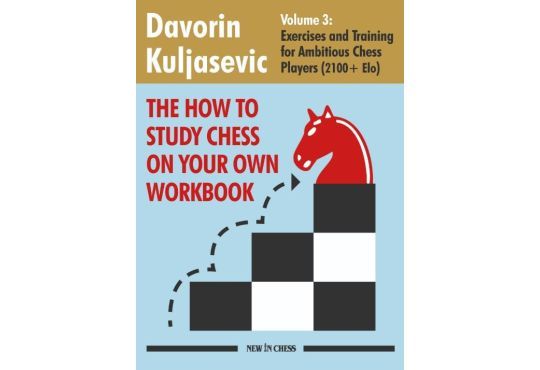 The How To Study Chess on Your Own Workbook - Volume 3 Exercises and Training for Ambitious Chess Players (2100+ Elo)$24.95
The How To Study Chess on Your Own Workbook - Volume 3 Exercises and Training for Ambitious Chess Players (2100+ Elo)$24.95
Another area of the game where intermediate players often need a lot of work is calculation. Often in games and study, we hope to find an obviously good move quickly. To advance in chess, we need to think more deeply about our moves and calculate multiple variations.
Aagaard breaks down calculating as a systematic process. Looking at key concepts like how long to spend calculating, finding “candidate moves,” and visualizing possible variations. The book also provides practical examples and breaks down chess positions into different types to simplify how to approach calculation. I would recommend this book for strong intermediates who already have some experience with studying chess. Aagaard explains his concepts clearly, but some of the examples involve deep calculations that can be frustrating for less experienced players.
Conclusion: Why Study With Chess Books?
Studying chess is a separate skill from playing it and for players who want to improve, it is a crucial one. Reading chess books offers more in-depth, engaging, and multi-faceted information than any other medium available.
Getting used to studying with books can take time. The good news is that there is a huge range of exceptional books to choose from. Starting with autobiographical style books with annotated games can be an enjoyable way to get used to studying with a chess book. Having a chessboard alongside you also makes the experience how practical and enjoyable.
The benefits of studying chess books are not just that you will start winning more games. It is also about the pleasure of discovering some new perspective or idea that you hadn’t considered.
If you don't know where to start, simply make a choice from a book list like this one. You can't go wrong!
Frequently Asked Questions
100 Endgames You Must Know by Jesús de la Villa explains and analyzes many of the most familiar endgame situations you may encounter.
Fundamental Chess Openings by Paul van der Sterren offers a clear description and discussion of many classic and modern chess openings.
Yes. While some people have a natural aptitude towards the pattern recognition that is integral to test, skills calculation and visualization can be taught. Excelling at Chess Calculation by Jacob Aagaard breaks down chess calculation into a system.


